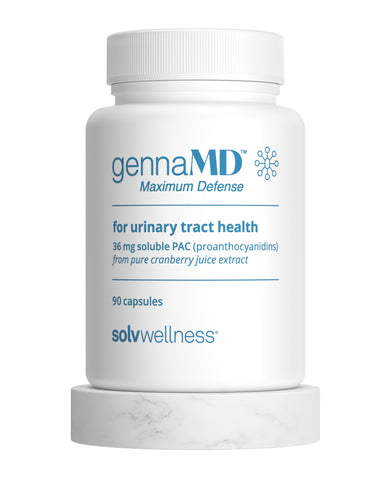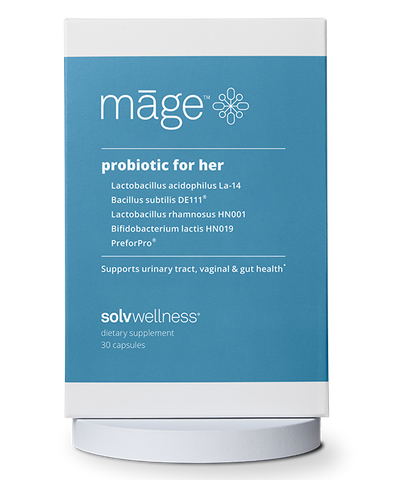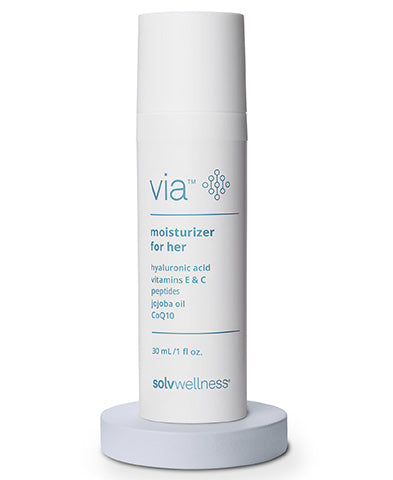With the proliferation of medical advances, we’ve grown used to fixing health issues as they arise. But all too often, we’re treating symptoms instead of underlying issues. Treating symptoms is easy, because they make themselves known, and we have things to seemingly make them go away: have a headache—take a pain reliever; have a stomachache—take an antacid; have frequent or chronic UTIs—take antibiotics. If we’re lucky (and mostly healthy), treating the pain and discomfort of symptoms feels like enough. But a simple fact of life is, there does come a point when it’s not, and paying closer attention to the signs your body is giving you becomes more important.
time for a "gut" check.
You may already be familiar with the term “microbiome,” especially related to the gut. It’s no surprise, because that’s where most of the science exists. Every day we’re learning more about the importance of a balanced gut microbiome—there’s even some evidence that certain imbalances in the gut microbiome are linked to obesity, irritable bowel syndrome, diabetes, and even mental health issues. We are now learning it’s not enough to be concerned just with the balance within one microbiome, aka the gut, especially for women.
what are microbiomes?
The human body contains somewhere between 75 and 250 trillion microorganisms, or microbes, that are a mix of bacteria, fungi, and viruses. Yup, you read that right. Microbiomes is the term for communities of these microbes that exist within a particular area of the body. Microbiomes can be found all over the body, including the gut, the reproductive organs, the vagina, the urinary tract—pretty much every body surface and every visceral organ.
You’re probably wondering why we need these microbes and microbiomes. The short answer is, because they help us by handling thousands upon thousands of processes a day that keep us going, such as aiding with the digestion of foods we can’t break down ourselves (like dairy) and regulating and supporting our immune systems, to keeping pathogenic (bad) organisms from causing harm.
These microbiomes are meant to maintain a precise balance, and when they do, we don’t even think about the areas of the body they inhabit. But a variety of factors make it harder for microbiomes to exist in harmony, especially as women age.

The skin acts as one of our body’s strongest barriers. When the skin (aka the epithelial barrier) becomes thinner and drier, a domino effect of changes occurs.
menopause and the microbiomes.
As women age, especially as we approach menopause, keeping our gut, urinary tract and vaginal microbiomes in balance becomes a little more difficult. But understanding how they work together makes all the difference in managing health.
One of the key factors involves the decline of estrogen levels. Estrogen is a highly lubricating hormone, and less estrogen leads to the thinning and drying of skin everywhere. That’s why we develop wrinkles and crow's feet around our eyes. The same kind of thinning also occurs inside the body, in places like the vagina and the urinary tract. The skin acts as one of our body’s strongest barriers. When the skin (aka the epithelial barrier) becomes thinner and drier, a domino effect of changes occurs.
The vaginal pH level changes, which makes the environment less acidic and less supportive to the productive and protective microbes. As they die off, the pathogenic bacteria can begin to thrive in the less acidic environment, making it easier for them to travel to the bladder. Ultimately, this increases the risk for infections like urinary tract infections (UTIs) and bacterial vaginosis (BV).
Most of the time, the healthy microbiomes are able to fight off the foreign disruptors on their own. But when they can’t, a variety of issues crop up, and not just in one place. That’s because our body’s many microbiomes are not independent of each other. In fact, when an imbalance appears in one place, imbalances can quickly appear in others. This is especially significant for women, because gut health, vaginal health, and urinary tract health are intrinsically linked in women’s bodies.

the interconnectedness of the female pelvic triangle microbiomes.
With new emerging research, we are learning more about how one part of the pelvic triangle affects the others, how the imbalance in one can cause trouble in another, and better ways to get ahead of previously (seemingly) unpreventable issues, like recurrent infections and chronic discomfort.
When we learn about taking care of and treating our bodies well, we are taught to include diversity: add an assortment of different colored vegetables to your diet, or when working out interchange aerobic and anaerobic activity. In many ways, we are taught that diversity makes us healthier, that diversity helps maintain a good, healthy balance. Maintaining that line of wisdom, we would assume that a diverse vaginal microbiome is a good thing. In that sense, we would imagine that a healthy vaginal microbiome has constantly changing and diverse microorganisms that circulate and balance each other out. However, recent studies are showing that is not the case. In fact, more diverse vaginal microbiome can mean trouble is brewing: on the one hand, it can be a sign of an infection like bacterial vaginosis (BV), or on the other, it can increase your chances of or susceptibility to a vaginal or urinary tract infection.
The vaginal microbiome doesn’t become diverse, or out of balance, all on its own. While a changing hormonal environment certainly helps promote an imbalance, disturbances in other microbiomes, such as the microbial communities of the gut and the urinary tract, can also be associated with vaginal and urinary symptoms—as well as recurrent infections. That’s why menopausal women have higher rates of UTIs versus younger women: the loss of estrogen, the thinning of the vaginal skin, and loss of healthy probiotics in the vaginal flora that usually protect the area.

There are ways to support the microbiomes of the gut, vagina, and urinary tract that will help keep them in balance and help you get ahead of such problems.
considering the three parts of the female pelvic triangle as a whole.
It would be easy if all we had to do to treat and prevent infection was to kill the pathogenic (“bad”) bacteria causing the infection and introduce more of the healthy (“good”) bacteria to the body. But the body is more complex than that. Until recently, all the healthcare community had at its disposal to help women with recurrent UTIs was to identify the presence of those “bad” bacteria in the urinary tract that grow in a culture and prescribe the correct antibiotic to kill them off. In other words, if your doctor performed a culture and found a certain kind of harmful bacteria, like E. coli, it was assumed that ridding the body of E. coli bacteria would be the answer to the problem. And women were told to go home, drink more water, practice better hygiene (wipe front to back) and wear looser clothing—essentially placing all the blame for recurrent UTIs on women's shoulders, unfairly contributing to the feeling of shame that women who suffer from recurrent UTIs often feel.
Most of this advice does little to affect the real problem, which is that the beneficial bacteria, the body’s natural defenses against infection, have been disproportionately knocked out by the antibiotics. The whole region has lost the players that support normal vaginal and urinary function and fight off the “bad” bacteria that cause damage and infections. But there are ways to help you get ahead of such problems.
the three-pronged approach to supporting the female pelvic triangle.
As we learn more about the complexity of the female pelvic triangle, we learn more about how to support it in ways that don’t inflict the kind of damage that antibiotics can cause. Although we are not as close as we’d like to be to understanding all the complexities of the female pelvic triangle, we now know that there are several options to help us safely and effectively get ahead of recurrent infections and discomfort.
These options include a probiotic that introduces healthy bacteria to the entire female pelvic triangle (not just the gut), a vaginal moisturizer that replenishes the supply of moisture to the skin of the vaginal and vulvar walls, and a cranberry supplement made only from concentrated cranberry juice extract, that helps keep pathogenic bacteria like E. coli from sticking to the urinary tract walls.
supporting your body’s microbiomes is the best way to stay in good health.
The human body is an amazingly complex ecosystem comprised of many smaller ecosystems that are designed to work together to keep you going. Supporting each of those ecosystems makes them better able to support you. As the old adage says, an ounce of prevention is worth a pound of cure.
To read about how to choose a probiotic supplement for women, click here.
For more information on how to support your entire pelvic triangle, click here.

Credit: Dana Fradon for The New Yorker










